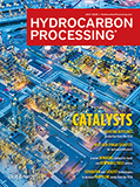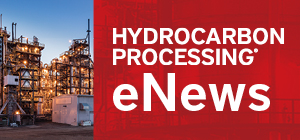Maintenance & Reliability
Reliability: How application engineers add value
Making the vendor-manufacturer your technology provider has been our consistent advice to the user industries; we have recommended this highly effective approach for many decades.
Editorial Comment: The reemergence of a collaborative platform
Readers have witnessed that throughout the life of the publication, <i>Hydrocarbon Processing</i> has always published information on new technologies to increase efficiency, safety and profitability in downstream processing operations, while introducing techniques to decrease environmental footprint and emissions and produce high-quality, clean fuels and petroleum products for consumers around the world.
Process safety as a profit center?
In today’s economic environment, new capital spending is harder to find than loose change buried under the couch cushions.
Hydrocarbon Processing Awards
<i>Hydrocarbon Processing,</i> the downstream processing sector’s leading technical publication, has announced the winners for its second annual awards.
Coupling maintenance strategies for critical equipment
Unplanned outages due to mechanical failures can cost millions of dollars of lost production time for oil and gas companies.
Corrosion impact of the mixture of butanol-blended gasoline
The role of octane boosters on the corrosivity of petroleum products for gasoline/diesel engines has attracted more attention in the auto fuel market due to the depletion of fossil fuels in the world’s feedstock.
Getting onboard with modernization
While electrical equipment typically has a lengthy lifespan, it is not meant to last, or be relevant, forever.
Viva Energy’s Geelong refinery reduces FCCU turnaround risk
Change involves risk. Many fluidized catalytic cracking units (FCCUs) can be operated more profitably, but changes to achieve more efficient operations can be risky.
A game-changing approach to furnace safeguarding
This work is a follow-up article to “Automate furnace controls to improve safety and energy efficiency,” which was published in the June 2014 edition of <i>Hydrocarbon Processing.</i>
Additive solutions to SOx emissions in FCCUs
Sulfur oxide additives are typically based on hydrotalcite or magnesium aluminate spinel-type structures. Magnesium alumina is the pickup agent present in the most effective SO<sub>x</sub> additives on the market; therefore, to optimize SO<sub>x</sub> reduction, it is critical to maximize the amount of the critical magnesium component in the fluid catalytic cracking unit (FCCU) in an efficient and cost-effective way.

- Vioneo awards Lummus polypropylene contract for world's first industrial scale fossil-free plastics from green methanol facility 8/19
- Research: Developing an energy-saving, carbon-capturing method for making ethylene glycol 8/19
- Emerson announced the release of its new Rosemount 3144S temperature transmitter 8/19
- Chinese refiners sweep up Russian oil after Indian demand falls 8/19
- Indonesia plans quick-to-build oil refineries for U.S. crude 8/19
- Russia's ultra low-sulfur diesel exports from Primorsk scheduled to rise in August 8/19




